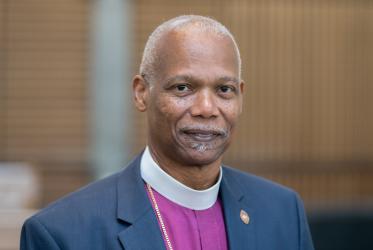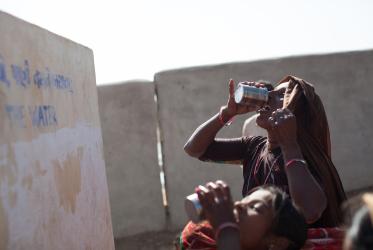egradation of the water catchment areas due to deforestation, land degradation, and industrial activity around such areas has caused untold suffering and had a negative effect on the economy. The current controversy about the Mau forest – the largest of all water catchment areas in Kenya is just the tip of the iceberg. Prolonged droughts, outbreak of Cholera and heavy floods are causing deaths and havoc, bringing suffering to many. Such events raise issues of inaccessibility to clean water, mismanagement of natural resources, ecological degradation, inequalities, sanitation, and poverty.
Against this backdrop a Presbyterian baptism recently took place of about 80 adults from the Maasai community of Kajiado (a semi-arid area in Kenya). They were baptized in a man-made pool (actually a “deeper” version of a trough). Because the rivers are dry, the water for baptism had to be purchased at a cost of 2,000 Kenyan shillings – about 26 US dollars. This is quite an investment in an area where people and livestock are dying due to lack of food and water. Yet the people opted for the water of baptism, rather than buying food or water, and chose also baptism by immersion. Even for infants, the minister had to be in the water as he baptized though by effusion in those cases. After the ceremony, the members of the congregation scrambled for the remaining water, dirty as it was, to feed their livestock.
This story represents the reality for many communities. There seems to be a very strong correlation between the water of baptism and water for daily use. The water of baptism represents life, the grace of God, renewal and hope. The yearning of this particular community for baptismal water at whatever cost reflects an equally deep yearning for the provision of water for ordinary use.
In contexts like this, water still remains the vehicle for taking the gospel to the people as well as the solution if their lifestyles are to change. Urban churches and others that have access to water, and those who still wish to maintain the Jordan river baptism motif, have their churches designed in such a way that there is a pool at the altar that can be opened and filled with water during baptism services. Others carry out their baptisms in swimming pools, while a majority of mainstream churches are content to carry out baptism by effusion. When I compare these different practices, it leads me to conclude that the people who thirst most for physical water thirst even more for baptismal water.
In the discourse between Jesus and the Samaritan woman (John 4:7-15), we see the Samaritan woman asking for the living waters. Yes, she needed the water from Jacob’s well, but she also needed the living water even more. God gives Jesus to the world, and Jesus offers himself to the world as the living water. This living water figuratively represents a blessing that reproduces itself, and like a spring, it is never exhausted. Through those suffering from water poverty, Christ is still begging for something to drink, for water, for the living water. In this season of Lent, as we deny ourselves comforts in order to feel the pain of others, may we come up with practical ways of providing an answer to the many who are still crying, give us water … the living waters!
* The Rev. Lucy Wambui Waweru, from the Presbyterian Church of East Africa (PCEA) is currently serving at the Lavington United Church (which is Anglican, Methodist, and Presbyterian).
Ideas for study and reflection
Take a moment to reflect on the story of the baptism told in this reflection. Reflect on how you use water during baptisms in your own congregation – do you use as little as you can, or as much as you are able to? Does the symbolism of water speak to you?
Were you aware that around the world it is often the poorest who pay most for their water? This is because they do not have access to any public water supply with regulated tariffs; instead they rely on informal private water vendors.
If the thought of using water more copiously in your prayer and worship experience makes you feel uncomfortable, it might be a good idea to find out which are the biggest water consumers where you live and compare their use of water with your congregation’s use of water in liturgical practices and other activities.
Questions for discussion
1. Do you know how to find the water catchment areas where you live?
2. How much water is used in celebrations of baptism in your church community? What relationship do you see
between the amount of water used in baptism and the costly nature of Christian discipleship that begins in
baptism?
3. How can the language of “living water” help you understand the needs of the Samaritan women at the well and
your own needs this lent?
What you can do
- While you may be considering saving water during baptism, you can find about other ways of improving the environmental and water footprint of your church. For example, Eco-congregations.org offers various modules with guidance and ideas forcongregations on how to cut down on energy, recycle more, water and be generally a great deal kinder to the planet than wealready are! The National Council of Churches in Denmark has identified 48 points for becoming a "green church". Remember that saving energy and reducing waste also protects our water resources.
- For further information on a local situation: Waterholes Restoration Project (Maasai Association)




